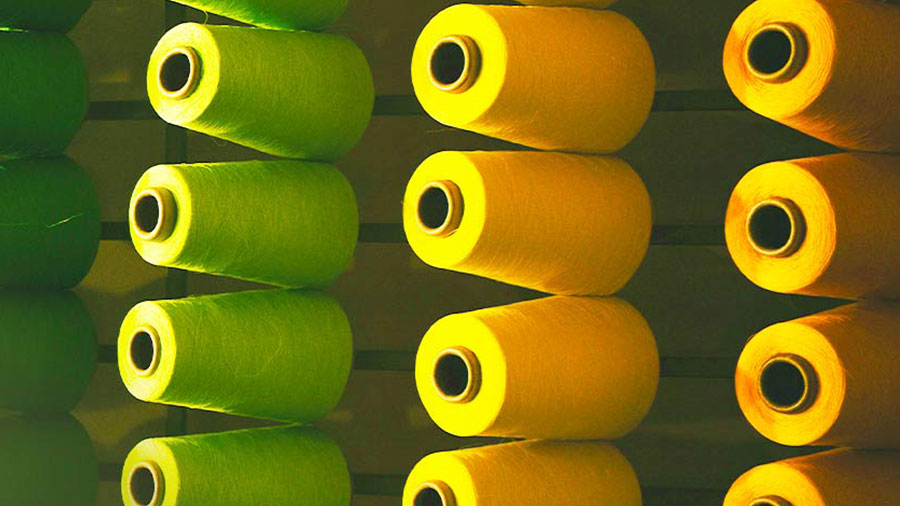India’s aviation ministry has released the second provisional list of 23 beneficiaries to the PLI Scheme for the Drone Industry. The list is based on the unaudited financial results for 2021-22 and beneficiaries will need to have crossed the eligibility threshold on sales revenue and value addition in FY 2021-22 to secure the PLI incentives.
Combined annual sales turnover of PLI beneficiaries in the drone industry reached INR 3.19 billion in 2021-22 from INR 880 million the previous year.
Foreign investors vetting opportunities in the local drone industrial ecosystem should note that more than one company within a group of companies can file separate PLI applications. India recently banned the import of drones (with the exception for R&D, defense, and security purposes) as it seeks to build up local capabilities.
Besides the PLI scheme, India has streamlined the bureaucracy for drone use and industrial applications. From April 1, 2022, all drone owners are mandated to possess a valid UIN, which will promote secure drone operations without needing multiple approvals.
Cumulatively, the industry-wide reforms and PLI scheme aim to make India a drone hub by 2030 by establishing an indigenous ecosystem that is transparently regulated and has manufacturing and IT-linked service capabilities.
Policies targeting India's drone industry
PLI scheme
India’s drone industry counts itself as one of the beneficiaries of the government's much touted Production-Linked Incentive (PLI) Schemes. The PLI scheme for drones and drone components, announced September 15, 2021, liberalizes the minimum value addition criteria to 40 percent of net sales - a relief to the sunrise sector. The scheme also covers developers of drone-related IT products. Gazette notification for the scheme was published on September 30, 2021. Applications were received till 23:59 hrs on March 31, 2022 as announced on March 10, 2022.
On May 4, 2022, the Ministry of Civil Aviation (MoCA) opened the application window for manufacturers of drones and drone components who may have crossed the PLI scheme’s eligibility threshold for the full financial year 2021-22. Such manufacturers could submit their application form at https://www.civilaviation.gov.in/application-pli-scheme. The deadline for submitting the PLI application form was 23.59 hrs on May 20, 2022. The final list of 23 PLI beneficiaries was released on July 6 after detailed scrutiny of the financial results and other specified documents submitted by the applicants.
As per a Business Standard report, the combined annual sales turnover of PLI beneficiaries in the drone industry grew to INR 3.19 billion in 2021-22 from INR 880 million in 2020-21.
First provisional list of beneficiaries
On April 20, 2022, MoCA published a provisional list of 14 PLI beneficiaries based on their financial results submitted for the 10-month period (April 1, 2021 to January 31, 2022). The shortlisted PLI applicants included five drone manufacturers and nine drone component manufacturers.
Shortlisted drone makers:
- Dhaksha Unmanned Systems, Chennai, Tamil Nadu
- Ideaforge Technology, Mumbai, Maharashtra
- IoTechWorld Aviation, Gurugram, Haryana
- Omnipresent Robot Technologies, Gurugram, Haryana
- Raphe Mphibir, Noida, Uttar Pradesh
Shortlisted drone component makers:
- Absolute Composites, Bangalore, Karnataka
- Adani-Elbit Advanced Systems India, Hyderabad, Telangana
- Adroitec Information Systems, New Delhi
- Alpha Design Technologies, Bangalore, Karnataka
- Inventgrid India, Sambalpur, Odisha
- Paras Aerospace, Bangalore, Karnataka
- SASMOS HET-Technologies, Bangalore, Karnataka
- ZMotion Autonomous Systems, Bangalore, Karnataka
- Zuppa Geo Navigation Technologies, Chennai, Tamil Nadu
Second provisional list of beneficiaries
On July 6, 2022, MoCA published a provisional list of 23 PLI beneficiaries, including 12 drone manufacturers and 11 drone component manufacturers. The list is based on the unaudited financial results for 2021-22 and other information. The shortlisted beneficiaries have crossed the eligibility criteria related to sales revenue and value addition in FY 2021-22.
Shortlisted drone manufacturers:
- Aarav Unmanned Systems, Bengaluru, Karnataka
- Asteria Aerospace, Bengaluru, Karnataka
- Dhaksha Unmanned Systems, Chennai, Tamil Nadu
- EndureAir Systems, Noida, Uttar Pradesh
- Garuda Aerospace, Chennai, Tamil Nadu
- Ideaforge Technology, Mumbai, Maharashtra
- vii. IoTechWorld Avigation, Gurugram, Haryana
- Omnipresent Robot Technologies, Gurugram, Haryana
- Raphe Mphibr, Noida, Uttar Pradesh
- Roter Precision Instruments, Roorkee, Uttarakhand
- Sagar Defence Engineering, Pune, Maharashtra
- xii. Throttle Aerospace Systems, Bengaluru, Karnataka
Shortlisted drone component manufacturers:
- Absolute Composites, Bengaluru, Karnataka
- Adani-Elbit Advanced Systems India, Hyderabad, Telangana
- Adroitec Information Systems, New Delhi
- Alpha Design Technologies, Bengaluru, Karnataka
- Dynamake Engineering, Hyderabad, Telangana
- Imaginarium Rapid, Mumbai, Maharashtra
- SASMOS HET Technologies, Bengaluru, Karnataka
- Servocontrols Aerospace India, Belagavi, Karnataka
- Valdel Advanced Technologies, Bengaluru, Karnataka
- ZMotion Autonomous Systems, Bengaluru, Karnataka
- Zuppa Geo Navigation Technologies, Chennai, Tamil Nadu
Bureaucracy streamlined
Released August 25, 2021, the Drone Rules, 2021 has relaxed approvals and other requirements for unmanned aircraft systems to make it easier for civilian drone operators to do business (more on this in a section below).
Following this, the government released the drone airspace map for India and sector-specific PLI scheme in September 2021 and the National Unmanned Aircraft System Traffic Management (UTM) Policy Framework in October 2021.
In January 2022, the Ministry of Civil Aviation (MoCA) notified the drone certification scheme to streamline and speed up the process of certification - an objective of the 2021 Drone Rules. Sharing the announcement on Twitter, MoCA said: “The drone certification scheme notified on January 26, 2022, under Rule 7 of the liberalized Drone Rules, 2021, will help in simpler, faster and transparent type-certification of drones”.
The single window DigitalSky Platform was also launched in January 2022.
On February 11, 2022, the MoCA removed the requirement of a drone pilot license for operating drones in the country. A Remote Pilot Certificate (RPC) issued by a DGCA-approved drone school will suffice. However, for drones for non-commercial purposes and up to 2kg - this RPC is not required.
Relevant Budget 2022 announcement
The Union Budget 2022-23 reiterated that the liberalized regulatory framework and manufacturing incentives aim to promote the indigenization of drone technology in India, whose applications and use are expected to cater to a cross-section of industries. The central government has identified drone technology and its applications as a sunrise sector.
Use of 'kisan drones' will be promoted for crop assessment, digitisation of land records, spraying of insecticides, and nutrients... Start-ups will be promoted to facilitate 'drone shakti' through varied applications and for drone-as-a-service (DrAAS). In select ITIs [industrial training institutes], in all states, the required courses for skilling will be started. - Finance Minister Nirmala Sitharaman, Union Budget 2022-23
Import ban announced February 9, 2022 by DGFT
To promote domestic drone manufacturing, the Indian Directorate General of Foreign Trade (Ministry of Commerce) notified that the "import policy of drones in CBU/CKD/SKD form under HS Code 8806 is 'Prohibited' with exceptions provided for R&D, Defence, and Security purposes. Import of drone components shall be 'Free'. This shall come into force with immediate effect."
The notification was made on February 9, 2022 and is in sync with the Finance Act, 2021. See notification here on the DGFT portal.
Why India is so keen to develop its drone industry
Drones are used for aerial photography and cinematography, land surveys, monitoring infrastructure like roads and highways as well as by the construction industry, defense, mining, telecom, disaster management, oil and gas exploration and monitoring sites etc. More widespread consumer market applications will soon become less futuristic, keeping pace with progress in tech innovation and higher cost efficiencies, which has developed solutions like drone-facilitated last mile delivery and other support for the retail, healthcare, logistics sectors etc.
For this to be a reality in India, its drone industry capacity needs to scale up. That means increased local production serving demand, investments in R&D, and solutions for both broad use and hyperlocal requirements. Only then will the industry experience significant cost reductions.
The PLI Scheme comes at a really opportune time for stakeholders in the drone industry as it intends to distribute incentives across the value chain. - Market analysts
This industry-ecosystem based approach spins off business opportunities for a wide range of companies upstream and downstream, from bigger firms in allied industries to high-tech startups as well as micro, small, and medium enterprises (MSMEs) – for component manufacturing; developing software applications, enterprise solutions, and counter drone technology; and the design and assembly of final products. The end outcome will be diversified product lines, finally reaching the level of consumer market appeal.
Market and industry growth projections
When the Drone Rules were announced in August 2021, industry players projected that India’s drone market could grow to INR 500 billion (US$6.8 billion) in the next five years. This is because India’s regulatory norms were finally aligning with global trends, and opening prospects for commercial use and participation of foreign investors.
On its part, the Civil Aviation Ministry projects that India’s drone industry could see total turnover worth INR 120 billion to 150 billion (US$1.63 billion to US$2.04 billion) by 2026 assisted by the PLI Scheme, which has a budget allocation of INR 1.2 billion (US$16.32 million) spread over three years (information on how the scheme works is covered in a later section below). Drone makers in India currently have a turnover of about INR 800 million (US$10.88 million).
At a press briefing on Thursday, September 16, the Civil Aviation Minister Jyotiraditya Scindia said, “With Drone Policy (Rules) and Drone PLI scheme, we have an aim that drone manufacturing companies in India should reach a turnover of ₹900 crore [INR 9 billion (US$122.44 million)] in the coming three years.” This will be a cumulative result of the development of a “value chain in the drone industry”, covering “hardware (drone manufacturing), software, and service delivery.”
Prior to the Drone Rules 2021, the sector saw limited funding opportunities, with B2B startups attracting the bulk of any venture capital interest and overall limited scope for innovation in the industry. In fact, compared to investment in India’s drone startups (US$16.56 million), China’s drone startups had attracted 14x more investment between 2014-18, at about US$239 million.
Drone Rules, 2021: What are the key changes and market implications?
In March 2021, the Ministry of Civil Aviation (MoCA) published the UAS Rules, 2021. They received quite the backlash from academia, startups, end-users, and industry stakeholders for fostering a licenses-oriented regime and highly restrictive. The government responded to the feedback by repealing the UAS Rules, 2021 and replacing it with the liberalized Drone Rules, 2021.
In its formal notification of the new rules, the Civil Aviation Ministry noted that: "Unmanned Aircraft Systems (UAS), or drones, offer tremendous benefits to almost all sectors of the economy like agriculture, mining, infrastructure, surveillance, emergency response, transportation, geo-spatial mapping, defense, and law enforcement etc. Drones can be significant creators of employment and economic growth due to their reach, versatility, and ease of use, especially in India’s remote and inaccessible areas. In view of its traditional strengths in innovation, information technology, frugal engineering and huge domestic demand, India has the potential to be global drone hub by 2030." Private players are also free to use drones for delivery purposes subject to compliance with the Drone Rules, 2021.
Key regulatory relaxations for India's drone industry
Rollback of a license regime
Under the Drone Rules, 2021, the total number of forms to be filled has come down to five from the previous 25 forms.
The approvals that are now abolished include: unique authorization number, unique prototype identification number, certificate of manufacturing and airworthiness, certificate of conformance, certificate of maintenance, import clearance, acceptance of existing drones, operator permit, authorization of R&D organization, student remote pilot license, remote pilot instructor authorization, and drone port authorization, among others.
Reduction in fees
Total fee payments to qualify as a drone operator has been reduced from 72 to four.
Delinking payments from drone size
Fee payments are now also delinked from the size of the drone. For example, it is reported that the remote pilot license fee, which was INR 3,000 for a large size drone, is reduced to INR 100 – this is also the fee for all drone categories.
Moreover, drones up to a weight of 500 kg has come under the ambit of the Drone Rules. Previously, the regulations covered drones up to 300 kg. This means drone taxis will become a possibility in India.
No security clearance required
Security clearance prior to issuing a drone license is now abandoned.
No drone license required
India now just requires a Remote Pilot Certificate / RPC issued by a DGCA-approved drone school through the DigitalSky Platform. It has been reported that no RPC is required for operating a drone up to 2kg and for non-commercial use.
Unique Identification Number
Recreational and commercial drone operators must seek issuance of the UIN from the DigitalSky portal. It requires portal account login, UAS Serial Number from dashboard, and INR 100 application fee.
For drone users with DAN, March 31, 2022 is the last date to convert the DAN to UIN.
From April 1, 2022, the ownership of any drone without a valid UIN will be declared illegal and subject to penal action under the law.
Foreign participation allowed
Foreign companies can also invest or own companies operating drones in India.
Import regulation
The Directorate General of Foreign Trade (DGFT) will continue to regulate import of drones but requirement of import clearance from the Directorate General of Civil Aviation (DGCA) is abolished.
Digital Sky platform
The single-window platform is now operational for the required clearances that will further streamline the process.
The government has also published an interactive airspace map on this platform, showing yellow, green, and red zones, based on where drones can operate.
This was launched January 2022.
Zonal demarcation categories relaxed
The demarcation and mobility of drones in the yellow, green, and red zones have also been reformed. Previously, the yellow zone was a zone at a distance of 45 km from the airport perimeter; this is now reduced to a 12 km radius. Consequently, the green zone is an area beyond the 12 km radius of the airport perimeter.
Drone certification scheme
The new drone certification scheme establishes the minimum safety and quality requirements for unmanned aircraft systems in the country and will apply to all domestic drone makers, assemblers, and importers. The scheme thus introduces an accreditation framework to match global standards for drones, widens scope for commercial applications, and clarifies necessary safeguards.
Another key goal of the scheme is to speed up and simplify the certification process for indigenous drone manufacturers, assemblers and importers.
In terms of regulatory oversight, the scheme will be supervised by a steering committee to be chaired by a “known professional” accepted by government and industry stakeholders – along with a Quality Control of India secretariat. The steering committee shall include technical and certification committees.
Requirements when submitting an application for certification of a drone by manufacturers include various test data, results, etc. Details to be provided include weight specifications, type of launch and recovery mechanism installed, speed, etc.
Setting up remote pilot training organizations
As per Drone Rules, 2021, any person who intends to obtain the authorization to establish a Remote Pilot Training Organization (RPTO) shall submit an application to the Director General of Civil Aviation in Form D5 on the Digital Sky Platform, along with the specified fees.
As on December 31, 2021, nine remote pilot training organizations have been set up by entities under Government or private ownership. These are: Alchemist Aviation Pvt. Ltd. (Jharkhand); Redbird Flight Training Academy Pvt. Ltd. (Maharashtra); The Bombay Flying Club (Maharashtra); CASR Anna University (Tamil Nadu); Flytech Aviation Academy (Telangana); Telangana State Aviation Academy (Telangana); Ambitions Flying Club Pvt. Ltd. (Uttar Pradesh); Indira Gandhi Rashtriya Udan Akademy (Uttar Pradesh); and Pioneer Flying Academy Pvt. Ltd. (Uttar Pradesh).
Any person between 18-65 years of age and with a Class 10 certificate from a recognized Board can obtain a remote pilot license after successful completion of training from authorized remote pilot training organization.
Authorized remote pilot training organizations are free to collaborate with foreign entities while ensuring strict compliance with the requirements specified by the Director General of Civil Aviation with respect to training syllabi, infrastructure, instructors, equipment, infrastructure, etc.
PLI scheme for drones and drone components: A breakdown
The aviation ministry reopened the applications window on May 4 till 23:59 hrs, May 20, 2022, so that newly eligible firms (based on their financial results in FY2022) could apply for the PLI scheme. As mentioned earlier, a list of 14 provisional beneficiaries was released in April. The government intends to formally complete the vetting process before July.
It is reported that more than one company within a group of companies will be allowed to submit separate applications. The PLI scheme budget of INR 1.2 billion is nearly double the combined turnover of all domestic drone manufacturers in FY 2020-21. On September 30, 2021, the Ministry of Civil Aviation formally notified the PLI eligibility criteria via gazette announcement (see here).
The Indian drone industry will have a total turnover of up to INR 150 billion by 2026. - Aviation Minister Jyotiraditya Scindia on impact of the PLI scheme
How the PLI Scheme works
Eligibility
The government has kept the eligibility norm for Indian MSMEs and start-ups in terms of annual sales turnover at a nominal level – INR 20 million (for drones) and INR 5 million (for drone components). This both widens and makes flexible the number of beneficiaries.
Eligibility norms for non-MSMEs, in terms of annual sales turnover, is INR 40 million (for drones) and INR 10 million (for drone components).
Incentives
The incentive payable to a manufacturer of drones and drone components shall be simply one-fifth of the value addition. The below example was shared to illustrate the PLI calculation for a manufacturer.
|
Example: PLI Calculation for a Drone Manufacturer (Sample Year FY 2021-22) |
|||||
|
Claim year |
Sales – net of GST (INR crore) |
Purchase – net of GST (INR crore) |
Value addition (INR crore) |
PLI rate (%) |
PLI due (INR crore) |
|
FY 2021-22 |
100 |
60 |
100–60 = 40 |
20% |
40 x 20% = 8 |
The PLI for a manufacturer will be capped at 25 percent of the total annual outlay. In case a manufacturer fails to meet the threshold for the eligible value addition for a particular financial year, they will be allowed to claim the lost incentive in the subsequent year if they make up the shortfall in the subsequent year.
Key features
- The incentive for a manufacturer of drones and drone components shall be as high as 20 percent of the value addition made by the firm.
- The value addition shall be calculated as the annual sales revenue from drones and drone components (net of GST) minus the purchase cost (net of GST) of drone and drone components.
- The government has agreed to keep the PLI rate constant at 20 percent for all three years, an exceptional treatment given only to the drone industry. In PLI Schemes for other sectors, the PLI rate reduces every year.
- The proposed tenure of the PLI Scheme is three years, starting in FY 2021-22.
- The government has agreed to fix the minimum value addition norm at 40 percent of net sales for drones and drone components instead of 50 percent, another exceptional treatment given to the drone industry.
Estimated payout schedule
|
Estimated Payout Schedule of PLI for Drones and Drone Components |
||||||
|
Claim year |
Sales – net of GST (INR crore) |
Purchase – net of GST (INR crore) |
Eligible value addition (INR crore) |
PLI rate for value addition (%) |
Applicable PLI (INR crore) |
Disbursement year |
|
FY 2021-22 |
200 |
120 |
80 |
20% |
16 |
FY 2022-23 |
|
FY 2022-23 |
400 |
240 |
160 |
20% |
32 |
FY 2023-24 |
|
FY 2023-24 |
900 |
540 |
360 |
20% |
72 |
FY 2024-25 |
|
TOTAL |
1500 |
900 |
600 |
20% |
120 |
|
Which drone components are eligible PLI target beneficiaries?
The PLI Scheme will cover a wide variety of drone components, including the following:
- Airframe, propulsion systems (engine and electric), power systems, batteries and associated components, launch and recovery systems
- Inertial Measurement Unit, Inertial Navigation System, flight control module, ground control station and associated components
- Communications systems (radio frequency, transponders, satellite-based etc.)
- Cameras, sensors, spraying systems, and related payload etc.
- 'Detect and Avoid’ system, emergency recovery system, trackers etc. and other components critical for safety and security
- The list of eligible components may be expanded by the government from time to time, as drone technology evolves.
- The government has agreed to widen the coverage of the incentive scheme to include developers of drone-related IT products.
Industry outlook and challenges
The annual sales turnover of the drone manufacturing industry is expected to grow multifold from INR 600 million in 2020-21 to over INR 9 billion in FY 2023-24. During this period, the drone manufacturing industry is expected to generate over 10,000 direct jobs.
The government estimates that the drones and drone components manufacturing industry will attract investments over INR 50 billion over the next three years.
The PLI Scheme will also impact the breadth of the drone services industry (operations, logistics, data processing, traffic management, etc.). Cumulatively, the drone services industry is expected to grow to over INR 300 billion in the next three years and generate over 500,000 jobs.
The government has also said that besides the flexible criteria in identifying target beneficiaries, the PLI Scheme could be extended or redrafted after studying its impact in consultation with the industry.
While the drone industry has benefited from growth in sales turnover and a growing number of start-ups, it still lags behind leading economies. India has registered 211 drone start-ups (data from Tracxn, March 2022) - a small increase from 157 in August 2021 but nowhere close to the 970 in the US. Funding for drone start-ups has also only marginally grown, increasing on average from US$5.1 million per start-up in 2021 to US$5.6 million in 2022.
Now the Federation of Indian Chambers of Commerce and Industry (FICCI) is urging the central government to set up an inter-ministerial committee on drones to address bottlenecks impeding growth in the sector. Money Control notes: "Issues include getting permission for conducting drone flights, exports and overseas demonstrations of drones, indigenisation of components and so on."
This article was originally published September 17, 2021. It was last updated September 5, 2022.









